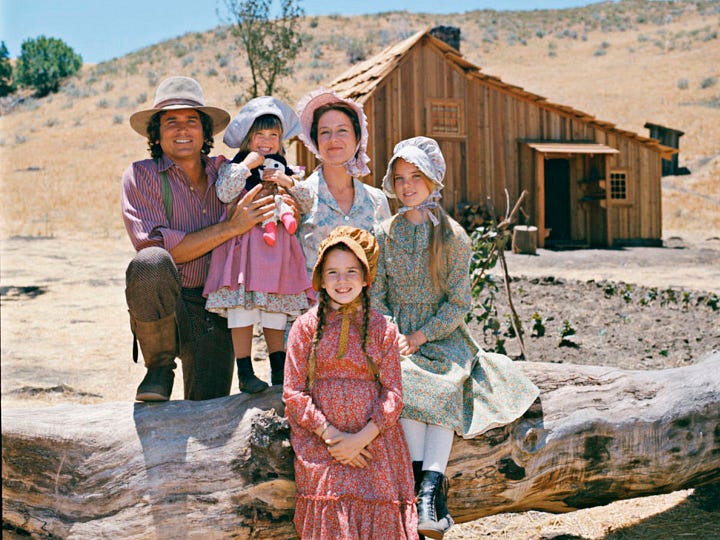If we're going to build on federal land, let's not build more single-family homes
We must use this moment to recognize the social and economic shifts of our time
Welcome back to The New Urban Order — where urbanists explore the future of cities. Every few months, I reintroduce myself and the work that I do here.
👋🏻 I’m Diana Lind. I’ve been writing about cities for more than 20 years, including in the book Brave New Home.
💻 I post articles to this newsletter twice a week and have 130+ posts in the archive. About 90 percent of what I publish has a paywall and I save the best insights and commentary for my paid subscribers. If you’re enjoying my newsletter, don’t delay in subscribing. For the next three weeks only, there’s a discount on subscriptions.
✈️ I host subscriber-only events in cities around the country and a book club on Zoom. This year, I met up with subscribers in San Francisco, and I’ll soon be announcing events in Philadelphia and Atlanta.
❤️ Engagement makes this work possible and fun. If you like a story, don’t forget to hit the like button, share the article and tag me on Substack or LinkedIn, or show some appreciation by subscribing.
Onward!
It’s hard to know how to respond to the Trump administration’s plans for government property. Almost two month ago the administration announced it would be selling off 443 government properties, then it rescinded the list. They’ve since quietly and occasionally updated a GSA web page with a smaller number of properties for sale, including the HUD building above, suggesting that they will eventually try to offload their “non-core” buildings.
So, what should we make of the fact that the government has now assembled a task force, co-chaired by the heads of the Department of the Interior and the Department of Housing and Urban Development, to explore using federal land for affordable housing? Is this seriously going to happen? I think there’s a more than decent chance that some federal land, particularly in states like Utah and Nevada, is going to get sold or leased, and housing is going to get built on it.
There’s already precedent for this. Last year, at the end of the Biden administration, the federal government transferred 20 acres of federal land near Las Vegas to build affordable housing. But here’s the thing— it’s only going to produce 210 single-family homes. The problem isn’t just the number of units, it’s the type of housing and the lack of any commercial component to the project as well.
Why We Can’t Do Homesteading 2.0


To some, building hundreds of thousands of single-family homes is exactly what we should be doing. Ed Pinto, senior fellow and co-director of the American Enterprise Institute’s Housing Center, is championing building eight single-family homes per acre in a concept that he calls “Homesteading 2.0”, a throwback to the way that government once made public lands available to homesteaders. To be clear though, I don’t think Pinto is advocating a Little House on the Prairie style of homesteading. Instead, he is hollowly invoking an era of self-reliance when the result will most likely be private developers building a lot of concrete houses and government footing the bill for the necessary infrastructure of water, electricity, internet, roads, and more.
Pinto is not alone in advocating for sprawl. Even Conor Dougherty seems to be siding with him in the recent New York Times article, “Why America Should Sprawl,”:
Adding density to already-bustling places is crucial for keeping up with demand and preventing the housing crisis from getting worse. It will not, however, add the millions of new units America needs. The only way to do that is to move out — in other words, to sprawl.
According to the Trump administration there are 400,000 acres of government land within 10 miles of urbanized areas. Plenty of land to sprawl on.
But while we can argue over where to build housing and how much land each house should take up, I think these conversations are missing a key question here: do single-family homes make sense, given the demographics, wants, and needs of Americans today? The answer, is no, they do not.
Moving Beyond Single-Family Homes



Ironically, while the Trump administration is full of frightening new policies every week, it might just be the best shot we have at a government that would demand that federal land be used for something other than hundreds of thousands of single-family homes.
Interior Secretary Doug Burgum who is co-chairing the Federal Lands Task Force with HUD Secretary Scott Turner lamented the mistakes of zoning and the lack of walkable cities while he was running for president in 2024. Last month, Vice President Vance addressed the National League of Cities and urged municipal leaders to get “smarter” about zoning. And Scott Turner is the first HUD Secretary to have actually worked for a housing developer. They all know it’s time to turn the page on this outdated chapter of architecture, planning, and development; they shouldn’t squander their opportunity to do it.
Single-family homes are typically designed to house a nuclear family, a household type that accounts for just one-fifth of households today.
More than 27 percent of Americans live alone while at the same time a record 17 percent of home purchases last year were “multigenerational,” including three or more generations under one roof. In addition, the number of 25-to-34-year-olds living with parents has increased by one-third over the past 20 years.
In many of these scenarios, single-family housing is keeping people from living peaceably with kin, or alone but connected to community. For single people, living alone can in some cases contribute to social isolation and the country’s “epidemic of loneliness.” For extended families living together, sharing space with limited privacy can lead to stressful living situations.
Instead of building yesteryear’s single-family homes, we need to be building homes that reflect today’s needs and preferences, providing people with a better balance of proximity and privacy. As the federal government transfers public land for housing, it should use this opportunity to demonstrate what kind of housing is really the American Dream.
Looks Like a Single-Family Home, But Isn’t


When I say that we have to move beyond single-family homes, I don’t mean that we should construct apartment buildings in the desert. We can build housing that resembles single-family homes, but offers designs that work better for today’s household types.
For every single-family home built on federal land, there should be an accessory dwelling unit (ADU) built alongside it. ADUs have grown popular because they support the single-family home aesthetic, rather than conflict with it. But they’re so practical because they enable kin to live together on the same property lot, but without having to negotiate kitchen space, bathrooms, or curfews that can make shared living difficult. ADUs are the perfect way to house grandparents, grown children living with parents, and extended family, such as aunts and uncles.
Likewise, well-designed multifamily developments can mimic the style of large single-family homes, but also provide more housing options within them.
Opticos Design has a whole catalog of “mansions” that actually feature smaller studios and one-bedroom apartments within them. These styles of housing can serve the growing number of people living in households of one or two people.
Finally, concepts such as “pocket neighborhoods” that skillfully site about a dozen homes on a single lot allow smaller-sized homes that are naturally more affordable. These homes might be the best housing type for nuclear families, but are better than traditional single-family homes because they allow shared green space that makes it easier for both adults and kids to socialize and be active.
We Need Communities, Not Just Housing
Finally, building acres of just single-family homes will make it near impossible to have abundant amenities within close distance. New development should not just include the ADUs, pocket neighborhoods, and small multifamily housing suggested above, but also feature some mixed-use areas, with retail and other amenities so that people can walk, bike or even quickly drive to their daily needs.
I know that adding the demand of commercial space starts to feel like adding another seed to an “everything bagel,” but hopefully the ROI-minded Trump administration would agree that denser housing plus commercial uses generates much more revenue for the government than inefficient, single-family sprawl.
, founder of Strong Towns, has called the process in which government incentivizes sprawling suburbia without worrying about who will pay for it in the long term a “growth Ponzi scheme.” Let’s hope that’s not what this push for housing development is really about.If you read this far, you might enjoy subscribing to this newsletter! If this is one of many of my articles you have enjoyed reading, please support this work by becoming a paid subscriber today!
Job Listings From My Network
Pulitzer Center - Director of Editorial Programs
NYCEDC - Vice President, Leasing
Partners for Rural Impact - Executive Vice President
Trust for Public Land - Project Manager
American Institute of Architects - Senior Manager, Editorial & Publications
About my book
Brave New Home offers a history of single-family housing and covers the social, economic and environmental consequences of our current housing crisis. It also presents solutions including: multigenerational housing, Accessory Dwelling Units (ADUs), tiny homes, co-living, intentional communities, wellness communities, zoning reform and more.
“Brave New Home is one of those invaluable books that offer a new, revelatory window on familiar problems.” — The New York Times









Having followed the Sagebrush Rebel’s fantasies about taking over public lands for a long long time, I don’t think we should expect that energy to blend with Trump’s crony capitalism to produce anything innovative. One of the things you have to understand about these people is that whatever gets built is strictly a by-product. For them, it’s the rush of making the deal that counts. And to the extent they want to build, it will almost certainly be what they understand (and what’s easy): sprawl. I took a look at the site of one of the proposed freedom cities and will be saying something about that when I get back to my newsletter.
CoHousing is another development option to build highly functional neighborhoods.